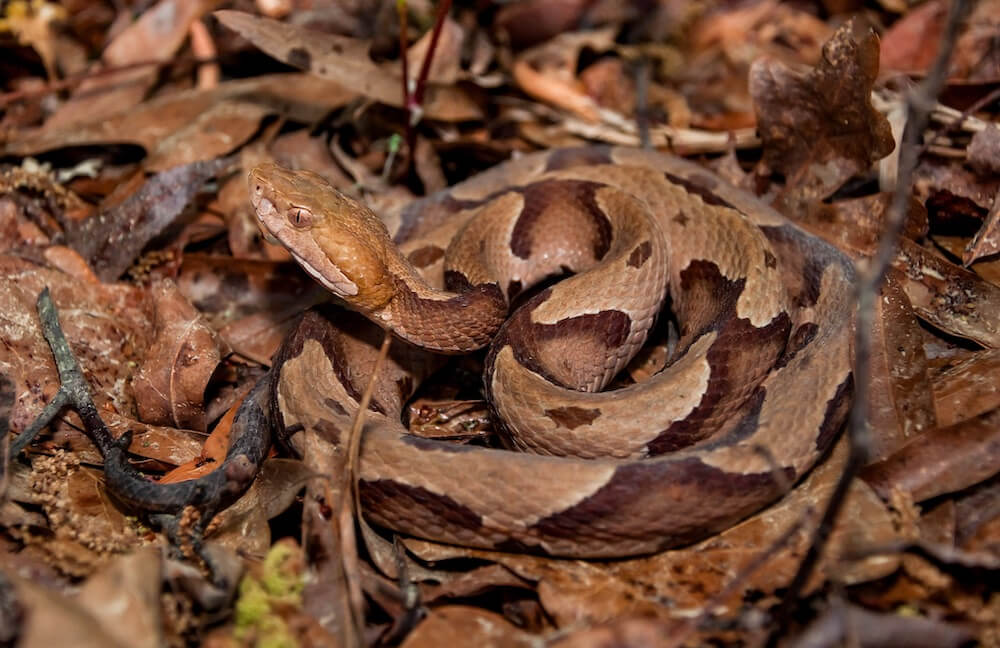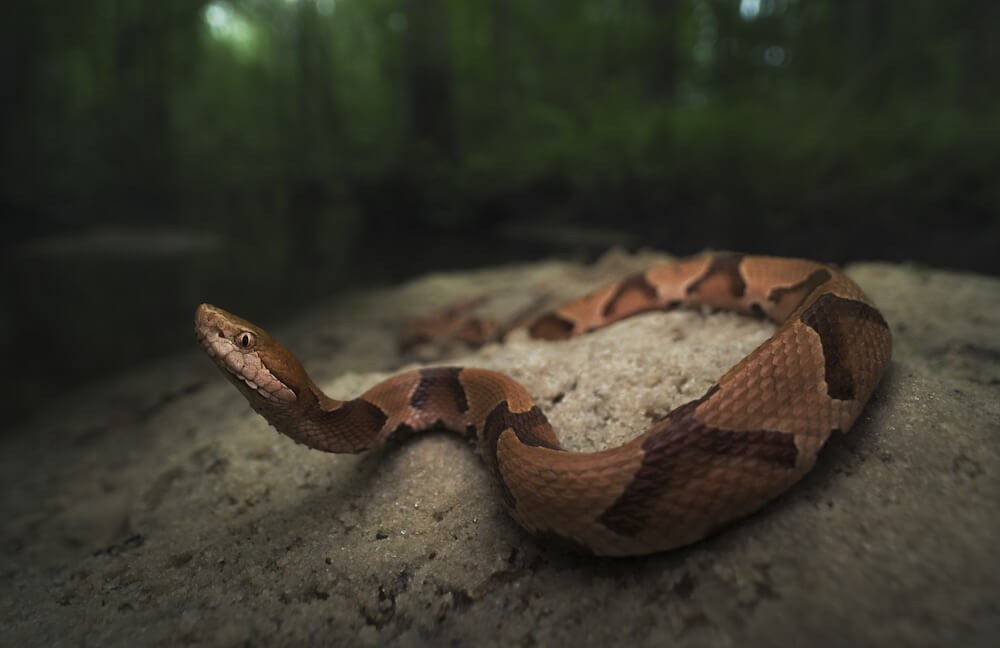Greensboro, North Carolina is the home to many popular hiking trails, and as summer weather hits, many people will be spending some time exploring the great outdoors.
But before you get outside, you'll want to have an idea of what kind of wildlife you can expect to see, and what you should be doing in the event you encounter certain species.
Below, we have included information on three reptile species you are likely to see while hiking in Greensboro, North Carolina, and what you should do if you find one.
Locals and visitors to Greensboro, and all those curious about reptilian wildlife: keep reading to learn more!
1. Copperheads
Copperheads can be found across the Eastern and Southeastern United States and are very common in Greensboro. They are members of the pit viper family, and like all vipers, they are easy to identify with triangular heads with clearly defined necks and thick, long bodies.
They also have heat-sensing pits below their eyes, which allow them to sense their prey even in the dark.
They take their name from their reddish-brown heads, and they have dark brown, hourglass-shaped bands that run down the length of their bodies.
They are magnificent-looking snakes; however, their venom is highly toxic to humans. If you see one in the wild, you should slowly back away, and keep moving.
Do not provoke it, try to pick it up or otherwise disturb it--doing anything except leaving it alone is extremely dangerous.
However, deaths from copperhead bites are rare, and if antivenom is administered soon after the bite, there will not be serious damage.
If you get bitten, you should treat it as an emergency and seek medical care immediately.
2. Rat Snakes
Rat snakes, sometimes called “black snakes,” are one of the big snakes you are most likely to see hiking around Greensboro.
As you can probably guess from their nickname, Rat Snakes are black in color, and they have thick bodies that are around 5 feet in length.
As always, you should never attempt to pet, pick up or physically disturb wildlife when you are spending time in nature. However, these snakes are not dangerous to humans and can be safely observed from a distance.
If you spot a rat snake in nature, watch it to see how it behaves--if you’re lucky, you might even get to see it climb straight up a tree!
Rat snakes are skilled climbers and can grip the trunks of trees with the scales on their bellies. If you have seen one climb, you know it is quite something!
They are non-venomous and generally docile, but if you try to touch one or pick it up, you may be on the receiving end of a sharp bite and foul-smelling musk that the snakes excrete when threatened.
3. Box Turtle
Box Turtles are small to medium sized turtles, with highly domed shells. The shells are usually primarily brown, with orange or yellow patterning.
Unlike many other reptiles and amphibians, turtles are, of course, slow-moving. This might make it tempting to try to pick one up or pet its shell, since it won’t be able to quickly scamper or slither away, as other species can.
But even though they might be easier to catch, this does not mean you should approach or touch a Box Turtle.
Unfortunately, Box Turtles are becoming rarer to find in the wild, because of people collecting them to keep as pets.
If this is your first instinct when you see a wild animal, consider this: how would you like it if a huge stranger came into your home, picked you up high into the air and then took you to live in captivity?
If you are hiking with children, teach them about respecting wildlife, and remind them never to touch wild animals. Even if the species is harmless to humans, kids should learn how to be polite guests in nature, and as the saying goes, “leave nothing but footprints, take nothing but pictures.”
The only time it is acceptable to touch and move a Box Turtle is if you see one in a roadway. Another reason why Box Turtles are declining in the wild is because of road-related deaths. If you see one in a dangerous place, you can carefully pick it up and move it to the side of the road.
There you have it! Be on the lookout for Copperheads, Rat Snakes and Box Turtles when hiking in Greensboro, North Carolina this summer. You should never try to touch or pick up any wild animal; however of these three, Copperheads are the only ones who can seriously injure you if you get too close.
The other two will want to be left alone as well, but that doesn’t mean you can’t take pictures to show your friends! The most important thing is to be a respectful and responsible hiker around these wild animals.
Story provided by Jonathan David



